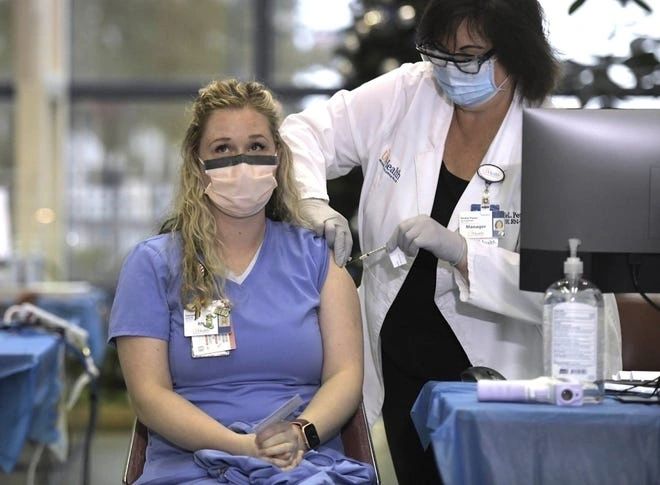As many healthcare workers are getting vaccinated, it is important to understand how signs and symptoms related to the vaccination must be evaluated against the signs and symptoms of COVID infection. It is important to not unnecessarily burden your operations by having employees out of the office who simply are showing normal reactions to the vaccine. The CDC recently released guidance on this situation here. The following is a summary of that guidance.
Important points:
- Most signs and symptoms from the vaccine occur during a 3-day period starting with the day of the vaccination.
- Signs and symptoms are typically none to mild but can be more severe, especially after the second vaccination in individuals less than 55 years old.
- Signs and symptoms related to the vaccination may include: pain/tenderness at the injection site, fever, chills, fatigue, headache, body/joint ache.
- Signs and symptoms NOT typically related to the vaccination include: cough, shortness of breath, sore throat, rhinorrhea, loss of taste or smell.
- Any sign or symptom noted can be attributed to many infectious and non-infectious etiologies. Standard testing is still required to confirm the presence of CoV-2 infection in a post-vaccination employee who has signs or symptoms not typically associated with the vaccination.
- The vaccination does NOT influence the results of the CoV-2 nucleic acid (NAAT) or antigen tests.
Lessening the impact on operations:
The following are steps you might consider to lessen the potential impact of post-vaccination signs and symptoms on practice operations.
- Consider asking employees, when possible, to schedule vaccination where they will be out of the office the next two days.
- Consider allowing employees to take off for two days after vaccination (in PCS opinion, an unlikely good choice – since the percentage of individuals having any significant reaction to the vaccination is low, best to manage them IF they occur).
- Inform employees of the potential signs and symptoms and palliative relief available if they occur (typically NSAIDs).
Managing post-vaccination signs and symptoms:
The following are the specific guidelines suggested by CDC for managing post-vaccination signs and symptoms. Note that these do NOT apply to individuals who have signs and/or symptoms with a related unprotected exposure to CoV-2 in the previous 14 days.
Employee has signs and/or symptoms UNLIKELY to be from COVID-19 vaccination (cough, shortness of breath, rhinorrhea, sore throat, loss of taste or smell)
- Exclude from work pending testing. Antigen testing is not recommended in this case – a negative antigen test should be confirmed by a NAAT test.
- Return to work according to previously established protocols.
Employee has ONLY signs and/or symptoms that may be attributable to COVID-19 vaccination or CoV-2 infection (pain/tenderness at the injection site, fever, chills, fatigue, headache, body/joint ache)
- If employee does not have fever and feels well enough to return to work they may even without testing.
- If employee has fever but it is attributable to another etiology, they may return to work but testing should be considered.

